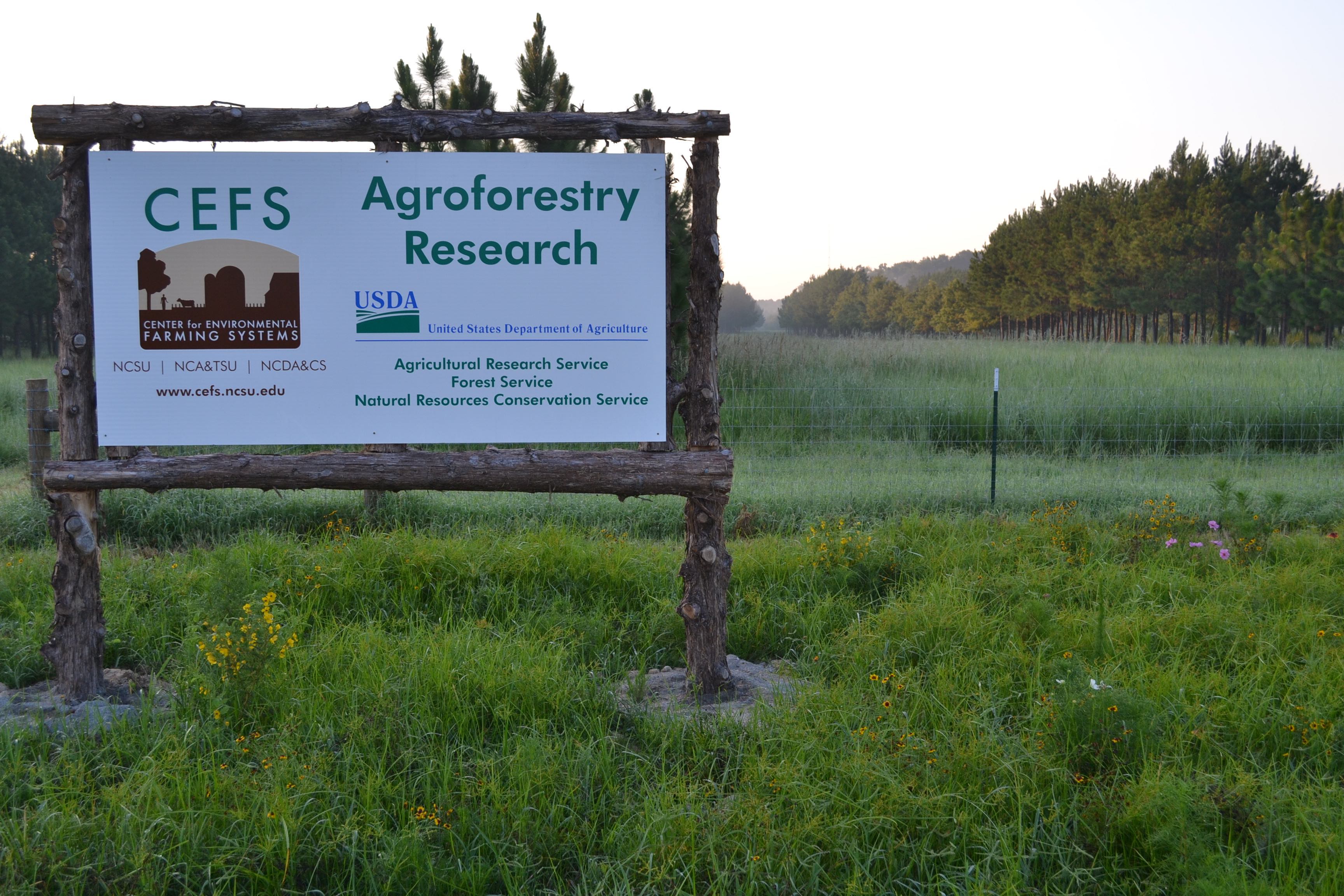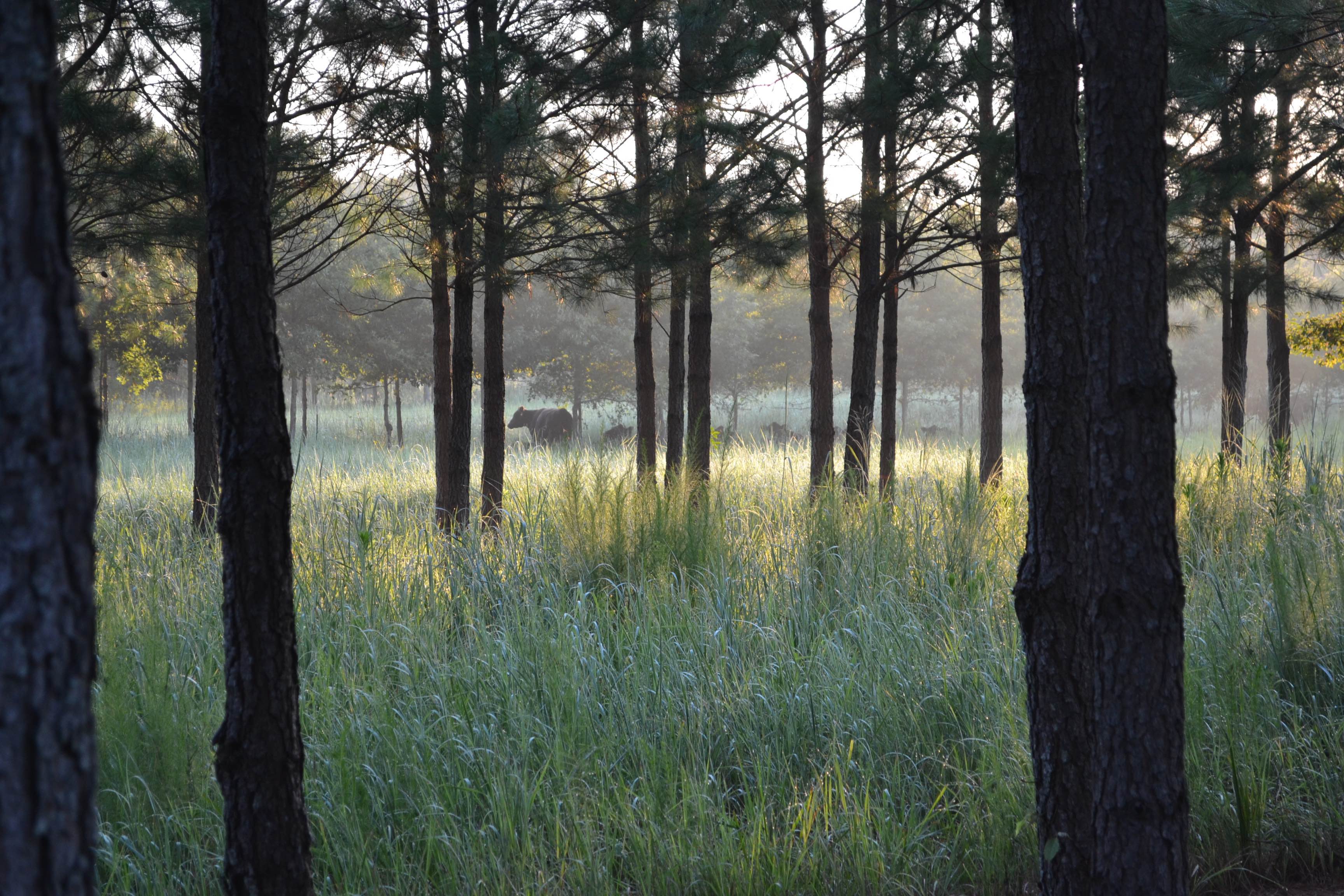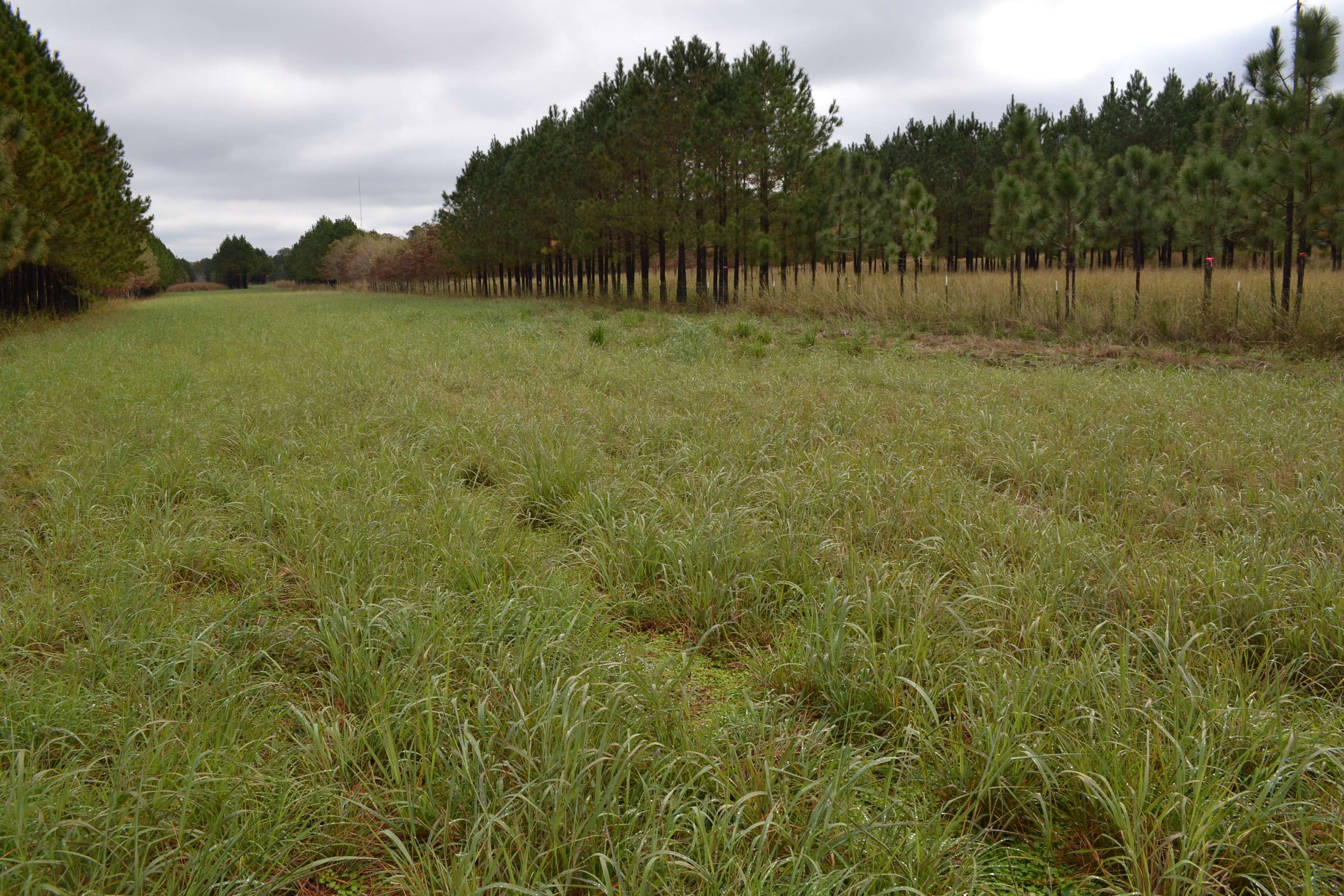Contemporary agricultural systems do not fit on all landscapes in the southeastern US. Researchers at the Center for Environmental Farming Systems’ Field Research and Outreach Facility at Cherry Research Farm in Goldsboro, North Carolina discovered this when they tried to grow corn and soybean in rotation on a floodplain site with a wide diversity of soil texture and slight variations in elevation (Figure 1). During the first several years, yields were either drought-affected on the sandy hummocks and acceptable elsewhere or decimated in low-lying areas due to flood waters and excessive moisture that rotted crop roots. Fortunately, with the vision of Dr. Paul Mueller, the site was also planted with rows of trees to create a mixture of agriculture and forestry. Once trees became large enough to be pruned of their lower branches and allow people and animals to move under them, investigators transitioned the site from alley cropping to silvopasture – the intentional mixture of trees and pasture.
 Figure 1. Entrance to the silvopasture site at the Cherry Research Farm managed by the North Carolina Department of Agriculture and Consumer Services.
Figure 1. Entrance to the silvopasture site at the Cherry Research Farm managed by the North Carolina Department of Agriculture and Consumer Services.
Not all agricultural landscapes are able to withstand the weather extremes in North Carolina equally well (note: a portion of agricultural land can be considered marginal for production – such marginal areas may be ideally suited for silvopasture). Floodplain soils have deposits of sand that do not hold water and organic matter very well if tilled, or for very long to withstand frequent occurrence of 10+ days without precipitation in the summer, resulting in drought and crop loss.
Other areas of the floodplain have soils with fine-texture (i.e. gummy clay) that have poor infiltration and remain saturated for long periods of time, again a consequence of tillage that accelerates soil organic matter decomposition and disturbs the continuity of pores for drainage to occur. Trees are able to withstand both drought and water-logging much better than annual crops due to their deep and expansive root system once established. It also helps that the large demand for water by trees creates an effective wick to dry soils out when wet and the perennial and deeper rooting of trees allows them to search out water deeper in the soil profile when necessary. In a similar manner, pasture grasses develop a perennial root system, which penetrate deep into the soil to extract water and overcome periods of drought. Perennial grasses can withstand occasional water saturation by growing rapidly and transpiring water back into the atmosphere.
 Figure 2. Cattle grazing forage alleys and seeking shade in the summer.
Figure 2. Cattle grazing forage alleys and seeking shade in the summer.
With the dedicated support and effort of the Cherry Research Farm staff, current treatments are allowing us to answer questions about the types of management that will be most beneficial to producers, and how management of silvopastures will affect basic agronomic characteristics of plant mixtures and environmental quality issues that are important to agricultural stakeholders and the public. The experiment has a combination of several native species including loblolly pine, longleaf pine, and cherrybark oak trees. Native warm-season grasses include big bluestem, eastern gamagrass, Indiangrass, and switchgrass. The only non-native introduction at this time is beef cattle – Black Angus heifers that graze forages during summer in the protective shade of trees (Figure 2). Our website is - https://cefs.ncsu.edu/field-research/additional-research/agroforestry/
Many questions remain for us to answer: How does system configuration affect production and ecological responses? What is the impact of tree-type on understory forage and microclimate? How does grazing management impact forage and timber components and their interactions? How effective is shade in silvopastures to the welfare of grazing livestock compared to open field systems? How do management and environmental conditions affect productivity? How best to achieve sustainability?
 Figure 3. Alley cut for native warm-season grass hay with alley grazed by cattle in the right background
Figure 3. Alley cut for native warm-season grass hay with alley grazed by cattle in the right background
Research on silvopasture design and management is really only beginning in North America, but the potential appears very high for achieving positive environmental results to stabilize agricultural landscapes and build resiliency to climate change. One key to successful implementation on a larger scale will be to demonstrate the potential economic profitability of this management system compared with current agricultural systems, while promoting the potentially larger environmental benefits (Figure 3).

